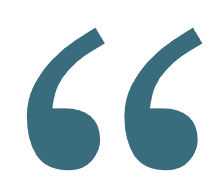Breath in Breath out
‘Take a deep breath and count to 10’. Probably someone has said that to you at one time or another when you were angry or upset. There is an ancient wisdom in this expression that touches on how we can better understand our way of wellbeing, the
‘being-in-the-here-and-now’
.
Are you aware of your breathing?
First, a few questions to encourage you to become aware of your “being-in-the-here-and-now.
- what did you do in the last two to three hours before you sat down to read this? In other words, what different activities did you engage in?
- What emotions did you experience while engaged in these activities?
- How is your breathing while you are engaged in your activities?
And another question, how are you breathing at the moment? Take a moment to notice the different aspects of your breathing. Like breathe in through your nose or through your mouth, or maybe both. How deep does your breathing go into your body, for example, up to the chest or all the way down to your abdomen? And what do you do with exhaling, through your nose or your mouth? And pay a attention to how many seconds you take to exhale.
It is interesting to realize: where are you while reading this article. In the office surrounded by colleagues, the train or at home on the couch.
Emotions affect actions
Why all these questions about breathing, physiology and emotions? Because they are an essential part of being human. They play an indispensable role in the effectiveness of our daily functioning, whether at home or in social life. It is precisely the emotional transition, the moving from one situation to another, that is overlooked.
For example, you just stepped out of a tiring zoom meeting and immediately took a phone call. The person calling you has a question that belongs within your expertise. The question is interesting, but you also know that it will take up quite a bit of your scarce time. The chances of your emotions from the exhausting zoom meeting coming through in the way you answer the phone call are almost 100%.
The power of emotions is usually underestimated or completely overlooked. It is precisely those emotions that determine your actions and thus have a huge impact on your results. Indeed, every action is preceded by a perception determined by the emotion. (A perception is an action because the nervous system is in action).
Emotional transition
When you switch from one situation to another, from zoom meeting to phone call, it is necessary to briefly reset your emotional household
reset
. Letting go of one situation before stepping into the next: that’s the
emotional transition
. This is how you prepare for a new situation with renewed energy. Simply by quietly paying attention to your breathing and running through the above questions again. How do you breathe, where is your breath and when you exhale, let go of the previous activity. The new situation in front of you gets the space and emotional attention that it deserves.
‘Take a deep breath and count to 10’
This simple but effective advice is your reminder of the
power of breathing
and importance of
emotional transition
. Your life can be compared to a journey under sometimes challenging circumstances. You navigate through that to the best of your ability. You can influence the quality of your life in many ways, awareness of your breathing and emotional status quo is one of them.
Learn more about effectiveness personal leadership? Watch: The Leader in You!
This article is based on thousands of conversations with coach clients and the author’s ontological studies.



